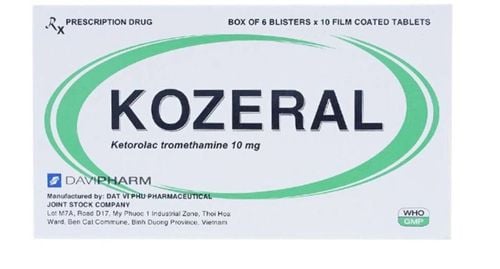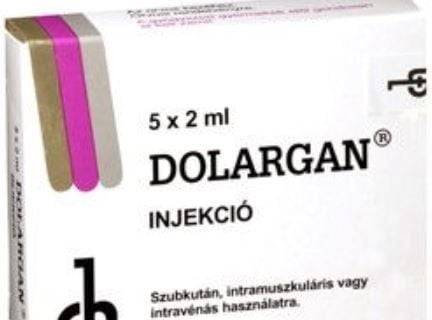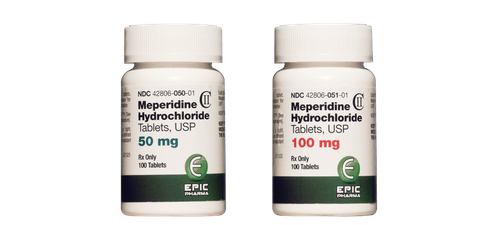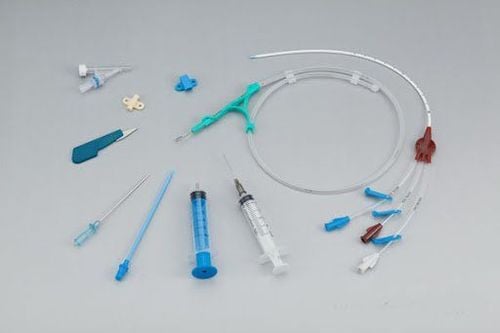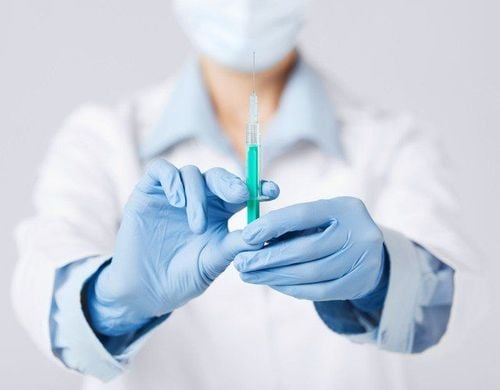This is an automatically translated article.
Posted by Doctor Nguyen Duc Tho - Department of Surgical Anesthesia - Vinmec Central Park International Hospital
Anesthesia under ultrasound guidance is a method of injecting anesthetic into the nerve sheath close to the nerves to help relieve pain during surgery and reduce pain after surgery.
1. What is catheterization, why should catheters be placed?
Because the effect of local anesthetic is usually short, in order to relieve pain for a long time for the patient after surgery, the doctor must thread a plastic catheter (catheter) into the nerve sheath to continuously or intermittently pump the anesthetic. close to the nerve without the need for repeated anesthetic injections. Cathter can be saved 2 to 3 days after surgery to relieve pain for the patient
This is a new technique, outstanding with many advantages of not having to use Morphine and morphine precursors, helping to reduce the side effects of morphine such as: nausea, vomiting, urinary retention, constipation, even addictive
2. Dominating the sensation of the upper extremities
Sensory control for the upper extremities are the capsular, radial, ulnar, medial, and musculoskeletal nerves. These nerves all arise from the brachial plexus
The brachial plexus is a large neural network extending from the neck down to the armpit. The plexus is formed by the anterior divisions of the spinal nerve roots. neck C5, C6, C7, C8, T1. From these branches form the trunk, second trunk and nerves
From the neck to the armpit, the brachial plexus is surrounded by a sheath of connective tissue, so when local anesthetic is inserted into this sheath, the local anesthetic It will penetrate to the components of the plexus to inhibit the conduction of the nerves and achieve pain relief.
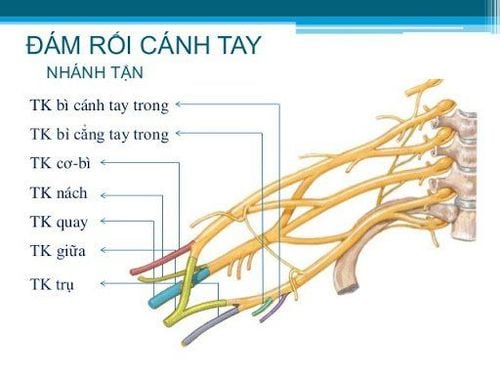
3. What is Catheter?
Catheter is a soft plastic catheter specially manufactured for medical use, they are inserted into internal body cavities such as blood vessels, nerve sheaths, pleural space, abdominal cavity, bladder, for the purpose of pumping drugs, providing fluids to the body, or draining body fluids out. This catheter can be temporarily kept in the body until the target of treatment
4. Indicated for what surgery?
Pain relief for all upper limb surgeries from shoulder to hand. However, the anesthesiologist can assess the pain of the surgery to decide whether to apply this method or not.
5. Contraindications
Patient disagrees. The patient is allergic to the anesthetic. Infection of the anesthetic area. Epilepsy and psychiatric patients. Do not numb the brachial plexus on both sides at the same time because it can easily lead to anesthetic toxicity due to overdose. Do not anesthetize the brachial plexus above the clavicle when there is pathology in the contralateral lung (hemorrhage, pneumothorax...). Patients with coagulopathy or taking anticoagulants
6. Perform catheterization
The patient lies supine facing the opposite side exposing the neck and shoulder area on the anesthetized side. The anesthesiologist will use an ultrasound machine to locate the brachial plexus, then use a specialized needle under ultrasound guidance, insert the needle into the connective capsule close to the nerves, and then Insert the catheter (catheter) through the needle into the appropriate position inside the capsule close to the nerves. The doctor will firmly fix the remaining catheter to the skin and keep the catheter in place for 2 to 3 days to inject pain medication to the patient

7. Accidents and complications
Put local anesthetic into the epidural space, subarachnoid neck area, (the patient is highly numb). Star ganglion anesthesia (Horner's syndrome). Numbness of the phrenic nerve. Numbness of the upper larynx (the patient may have hoarseness). Nerve damage (disorder of sensation in an area of the skin that is innervated by nerves). Poisoning by an overdose of local anesthetics or the introduction of local anesthetics into the blood vessels. Pneumothorax of the pleural cavity. Damage to the arteries causing the hematoma
8. Conclusion
With advances in technology, especially under ultrasound guidance, anesthesiologists are able to precisely identify the nerve to be anesthetized. Use a specialized needle for anesthesia to enter the nerve sheath, combine ultrasound and a nerve detector to identify the nerves located in the path of the needle, avoiding puncture of the blood vessel. Thereby minimizing the risks and complications such as nerve damage, injecting drugs into the blood vessels causing anesthetic poisoning, injecting drugs in the wrong position leading to technical failure.
Vinmec Hospital is currently applying this technique to effectively reduce pain for patients after surgery, bringing satisfaction to patients.
Please dial HOTLINE for more information or register for an appointment HERE. Download MyVinmec app to make appointments faster and to manage your bookings easily.





